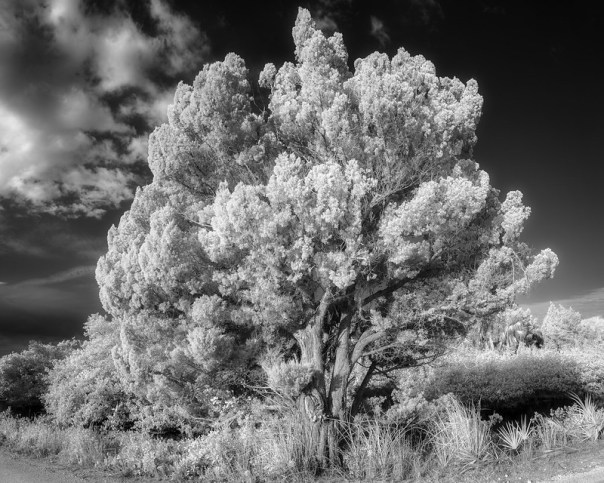I headed out toward Merritt Island National Wildlife Refuge with KM and KK last Friday.
We stopped by the boat ramp at the St. Johns River on US 50 for sunrise. There weren’t many clouds, so my hopes for color weren’t too high. But there was a nice pop as the sun came over the horizon and I zoomed in to capture this moment:
 St. Johns Sunrise – a peaceful pasture
St. Johns Sunrise – a peaceful pasture
I had my infrared modified camera in the car. When I saw these fishermen leaving, I pulled it out and hurried over to make an image. Despite rushing, I like the way it turned out. The clarity that IR brings to this image is nice, and the wake and boat reflection are pretty too. I’m glad I had the camera all setup to go before I grabbed it!
 Early departure – Monochrome, infrared
Early departure – Monochrome, infrared
KM is an ace at spotting birds and he called out this Merganser. When I got home, I thought at first it might be a Common Merganser – which I’ve never seen before. But it turns out their range doesn’t include Florida. So this was a Red-breasted – which I have seen, although infrequently.
There are a large number of Northern Shovelers around Black Point Wildlife drive. Of course they were mostly far away and when they were close, they seemed to always face in the wrong direction. But patience paid off when this male eventually swam slowly in front of us in good light and dragged his very handsome reflection with him.
Thistle plants are also all over on Black Point – this one came with a Bee on it. I made a four image panorama to record the whole subject with higher magnification and resolution. Sometimes I run into issues stitching these together. But this one turned out well:
KK called out this Snipe in the mangroves along the canal and we of course stopped to photograph it. The light was poor, with the sun behind it. When I first looked at my photo on the computer, it was very washed out. I added some dehaze in Lightroom and was pleased with the result.
Smaller birds were flitting around near the rest stop on Black Point. I usually find these hard to photograph. The light is bad way back in the reeds and they move quickly. It’s tough to focus on them through all the obstructions. I was shooting toward the sun for this image too and it didn’t look good at first on my computer. Thankfully it’s in focus and there’s a lot of latitude for processing with a RAW format file. I used local adjustments with the radial filter in Lightroom to boost the exposure and visible detail on the bird.
When we left on this trip, I had no idea what we’d see and photograph. There are no guarantees. I’ve learned though, that Mother Nature usually rewards us when we pay attention to her – in this case with a nice sunrise and several birds that I rarely see. And a little post processing rewarded me with improved photos.
Thanks for stopping by and reading my blog. Now – go make some photos!
©2019, Ed Rosack. All rights reserved












































